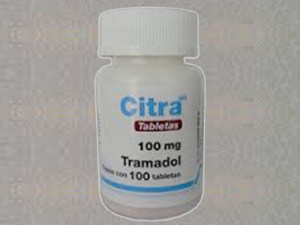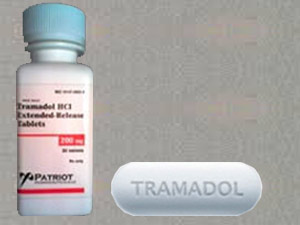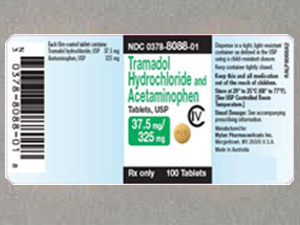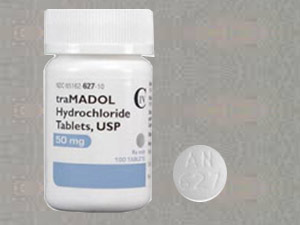Buy Tramadol Online
Showing all 4 results
-

Tramadol 100mg
$282.00 Buy Now -

Tramadol 200mg
$284.00 Buy Now -

Tramadol 37.5/325mg
$309.00 Buy Now -

Tramadol 50mg
$283.00 Buy Now
What is Tramadol?
Tramadol is a prescription pain medication that belongs to the narcotic analgesic category. This drug is similar to an opioid and can be classified as a synthetic opioid. People buy Tramadol online to manage pain ranging from moderate to severe.
Tramadol generic is also available as several brand-name drugs such as Ultram, Ultram ER, ConZip, and Qdolo. This medication acts in the central nervous system (CNS) and helps relieve pain in adults.
The extended-release version of Tramadol is beneficial as an around-the-clock treatment of pain. This form of Tramadol is not for use as an as-needed medication for pain relief.
What are the risks and warnings for Tramadol?
Tramadol can make you feel dizzy or drowsy. Taking it with alcohol or marijuana increases the sedative effect of this drug, thus, adding more to the pre-existing dizziness or drowsiness. So, do not drive, use machinery, or perform any task that requires alertness until you know how this medicine will affect you.
Tramadol can cause a rare but severe condition that affects the heart rhythm (QT prolongation). This condition can cause fast or irregular heartbeat and other symptoms such as fainting, and severe dizziness that need medical help right away. Low potassium levels in the blood may also become a reason for QT prolongation.
The risk of QT prolongation may increase if you have specific medical conditions or are taking other such medications that may cause QT prolongation. To avoid the risk, tell your medical healthcare provider about the following conditions before taking Tramadol:
- heart problems such as slow heartbeat, heart failure, QT prolongation in the EKG
- family past of heart problems, including sudden cardiac death and QT prolongation in the EKG
Things to do before taking Tramadol
Before taking Tramadol, you need to inform your medical healthcare provider if you are allergic to this medication or any other product or if you have other allergies. Tramadol may contain some inactive ingredients that can worsen your pre-existing allergy.
Before taking this medication, ensure that you tell your medical healthcare provider about the medicines you were taking earlier and your complete medical history, especially if you have ever had:
- an individual or family history of any substance use disorder such as addiction to or misuse of drugs or alcohol
- brain disorders such as seizures (or convulsions), brain tumors, or head injury
- breathing problems- interrupted breathing during sleep, asthma, COPD (chronic obstructive pulmonary disease)
- liver disease
- kidney disease
- stomach or intestinal problems including constipation, blockage with pain, paralytic ileus, and diarrhea due to infection
- trouble urination primarily due to an enlarged prostate
- the disease of the gallbladder
- a condition of the pancreas, including pancreatitis
- obesity
How to take Tramadol safely?
It would help if you always took Tramadol as per the dosing schedule your doctor recommended. Compared to other typical opioids, Tramadol offers unique pain relief by functioning on the same receptors as specific antidepressants if you take it carefully.
You should take this medication by mouth, usually every four to six hours as needed for pain treatment. If you are nauseated, you should take this medication with food; otherwise, you can take it without food.
Remember that pain medications such as Tramadol work best when you use it as the first sign of pain occurs. If you wait for your pain to worsen, even effective medicines like Tramadol may not work well enough.
Tramadol withdrawal symptoms
Discontinuing opioid pain medications like Tramadol abruptly may cause withdrawal, especially if you take this drug for an extended period or in high doses. To prevent withdrawal, your medical healthcare provider may suggest you lower the dosage.
You need to tell your doctor or pharmacist if you have any of the following withdrawal symptoms:
- restlessness
- watering eyes
- nausea, diarrhea
- runny nose
- muscle aches
- sweating
- sudden changes in mood or behavior
- mental changes such as trouble sleeping, anxiety, thoughts of suicide
Tramadol overdose
An overdose of Tramadol can be deadly if you have severe symptoms such as difficulty breathing or passing out. Other Tramadol overdose symptoms may include shallow breathing, seizure, slow or irregular heartbeat, and coma.
Your doctor may suggest you take naloxone, which is an opioid-reversal drug. You can buy it from a local health department or pharmacy.
What are the side effects of Tramadol?
Tramadol can slow down or stop your breathing, and even death may occur. Your caregiver or attendant must give naloxone and take medical help right away if you have blue-colored lips, shallow breathing with long pauses, or if you are hard to wake up.
Tramadol can also cause serotonin syndrome with the following symptoms:
- agitation, hallucinations
- fever, sweating, shivering
- muscle stiffness
- rapid heart rate
- loss of coordination
- twitching
- nausea, vomiting, diarrhea
Common side effects of Tramadol
- headache, dizziness, drowsiness
- tiredness, itching
- nausea, vomiting, stomach pain, constipation
Severe side effects of Tramadol
- a weak pulse or slow heart rate
- noisy or shallow breathing, sighing, interrupted breathing during sleep
- seizures
- lightheadedness
- low cortisol levels- vomiting, nausea, dizziness, loss of appetite, worsening weakness or tiredness
